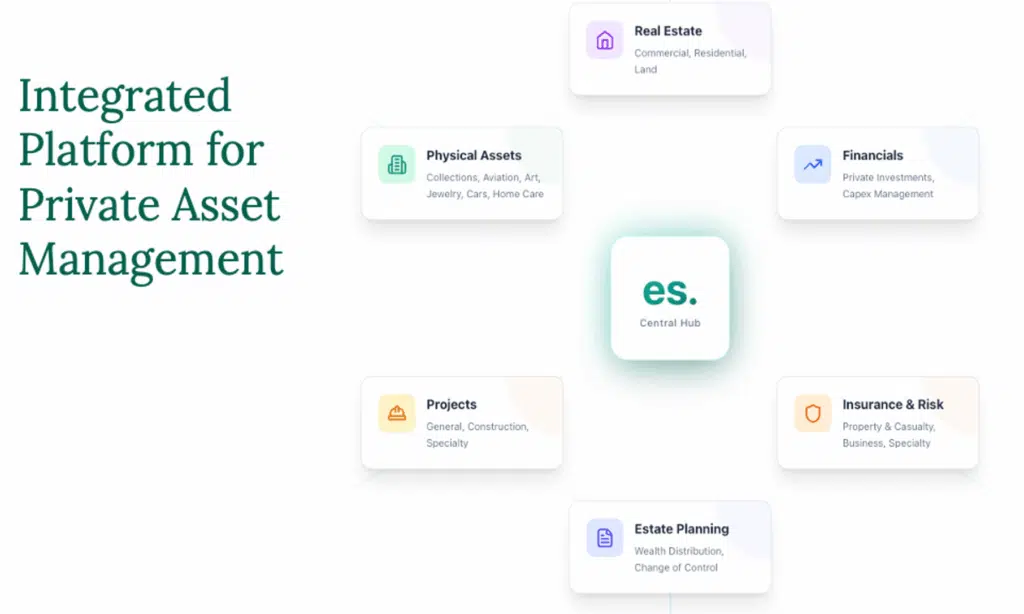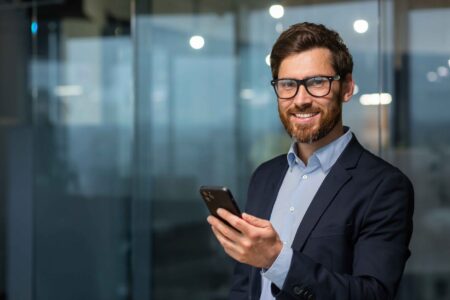Why Physical Assets Generational Wealth Matters More Than Ever
You’ve mastered financial markets. Your portfolio performance speaks volumes. However, here’s what most professionals miss: physical assets generational wealth represents the true foundation of lasting family prosperity. Moreover, according to Cerulli Associates, about $124 trillion in wealth will change hands through 2048, with most coming from families who hold major physical asset collections.
Those physical assets sitting in your properties—the restored vintage cars, inherited art collections, rare timepieces, and family heirlooms—represent hidden value that could transform your family’s financial legacy. Yet without proper management, these assets remain dormant wealth generators that never reach their potential for building physical assets generational wealth. As a result, families lose 15-20% of potential value through reactive management and poor documentation.
The Hidden Crisis in Physical Assets Generational Wealth
Family offices manage an estimated $5 trillion in unmanaged physical assets globally. These aren’t just sentimental pieces gathering dust. Instead, they’re growing investments that, when properly managed, can secure generational wealth transfer and provide cash during market drops. Also, these tangible assets often beat traditional investments during high inflation periods.
The problem? Most families treat physical assets as static possessions rather than active portfolio parts. As a result, this oversight creates three critical gaps that threaten successful wealth transfer:
The Three Critical Gaps in Physical Assets Generational Wealth:
- Documentation Gap – Critical records on history, condition, and value exist only in scattered notes or family memory
- Valuation Gap – Without regular professional reviews, families miss growth trends and best times to sell
- Strategic Gap – Physical assets rarely fit into broader wealth management strategies
Let’s look at each gap and its impact on your family’s wealth preservation:
Documentation Gap in Physical Assets Management
Critical records on history, condition, and value exist only in scattered notes or family memory. When succession planning begins, key information is often lost or incomplete. Therefore, breaking data silos across asset management becomes essential for keeping this knowledge safe.
Real scenario: A family discovers their grandfather’s wine collection is worth $2M, but without proper records of storage conditions, history, and purchase dates, they can only get $1.2M at auction. Also, tax issues become more complex without clear purchase records.
Valuation Gap Threatens Generational Wealth Transfer
Without regular professional reviews, families miss growth trends and best times to sell. That art collection bought decades ago may have grown 300%, but without current values, it remains invisible wealth. Moreover, insurance coverage often lags behind actual values, creating major risk exposure.
Example: A painting bought for $50,000 in 1990 could now be worth $200,000, but without updated reviews, the family carries only $75,000 in insurance coverage. As a result, they face huge loss exposure for 62% of the asset’s value.
Strategic Gap in Wealth Management
Physical assets rarely fit into broader wealth management strategies. They’re left out of estate planning, risk management, and cash planning discussions. In fact, asset oversight capabilities in traditional wealth management firms weren’t designed for physical collections spread across multiple properties and locations.
The impact: Families make poor decisions about keeping, selling, or giving away assets because physical assets exist in information silos separate from their financial portfolios. Therefore, strategic chances for tax savings and value capture go unrealized.
Building Systematic Physical Assets Generational Wealth Programs
Successfully implementing systematic approaches to physical assets generational wealth requires treating these holdings with the same rigor applied to financial portfolios. Specifically, this means implementing systematic processes for identification, documentation, and ongoing management. Furthermore, family office asset management systems eliminate the heroics that plague reactive approaches.
Traditional vs. Systematic Physical Asset Management
| AI Capability | Traditional Approach | AI-Powered Approach |
|---|---|---|
| Asset Documentation | Manual spreadsheet entry, 6-8 weeks | Drop files, AI auto-configures in minutes |
| Valuation Tracking | Quarterly manual updates | Continuous market monitoring with alerts |
| Insurance Management | Reactive renewals, coverage gaps | Proactive alerts 90 days before expiration |
| Maintenance Scheduling | Manual calendar tracking | AI-generated schedules based on asset type |
| Risk Assessment | Annual reviews | Real-time monitoring with predictive alerts |
The operational impact: What used to take months of manual data entry now takes minutes. Furthermore, EstateSpace clients report 60% reduction in administrative time, allowing asset managers to focus on strategic client relationships rather than operational logistics. As a result, they can serve more clients while delivering superior service quality.
Automated Asset Documentation for Wealth Managers
AI-powered platforms can process diverse file types—spreadsheets, PDFs, photos—and automatically extract relevant data to create asset records with full documentation. In addition, these platforms continuously improve their accuracy through machine learning.
Example: A photo of a painting triggers AI analysis identifying artist, estimated value range, insurance requirements, and optimal storage conditions—eliminating hours of manual research and data entry. Subsequently, the system automatically schedules condition assessments and insurance reviews based on the asset type and value.
Enhanced Client Communication Through Private Asset Management
Effective private asset management services facilitate transparent communication among family members about extensive collections and future planning decisions. In fact, these conversations often prove more valuable than the technical asset management itself.
Critical conversations wealth managers must facilitate:
- Who gets what and when?
- What items should families keep versus donate or sell?
- How long will they manage certain collections internally?
- Which organizations should receive charitable donations?
- What professional services do they need for asset transitions?
The planning imperative: Most clients ignore these inevitable decisions until they become crisis situations. Therefore, proactive planning through comprehensive wealth management ensures family harmony and optimal financial outcomes. Moreover, documented conversations prevent future disputes and misunderstandings among family members.
Implementation Strategy for Expanded Private Asset Management Services
Phase 1: Comprehensive Asset Assessment for Wealth Management
Evaluate all client holdings—not just traditional investments—to understand the full scope of wealth management requirements. Initially, this assessment reveals the true complexity of client portfolios.
Discovery questions:
- What physical assets exist beyond investment portfolios?
- Where are these assets located and how are they currently tracked?
- What disposition plans exist and what family conversations are needed?
- What insurance coverage exists and when do policies renew?
Subsequently, this comprehensive assessment informs the strategic approach for each client relationship. As a result, asset managers can prioritize the most critical risks and opportunities.
Phase 2: Specialized Partnerships for Asset Management
Create relationships with storage facilities, auction houses, appraisers, and logistics providers who understand unique requirements of ultra-high-net-worth families. Furthermore, these partnerships extend your firm’s capabilities without requiring internal expertise in every asset category.
Partnership categories:
- Climate-controlled storage for art, wine, collectibles
- Specialty insurance providers for high-value collections
- Auction houses and dealers for strategic disposition
- Transportation and security services for valuable items
In addition, maintaining a curated network of trusted partners enables rapid response when clients need specialized services. Therefore, these relationships become a competitive advantage in attracting and retaining UHNW clients.
Phase 3: Secure Documentation Systems for Private Assets
Choose platforms handling diverse asset types with appropriate security protocols and family access controls. Specifically, breaking data silos across asset management creates the unified visibility ultra-high-net-worth families require.
Platform requirements:
- SOC 2 Type 2, HIPAA, GDPR compliance for sensitive wealth data
- Role-based permissions (principals, staff, vendors see different data)
- Complete data ownership and portability
- Integration with existing accounting and reporting systems
Moreover, the right platform eliminates the technical burden while providing institutional-grade security and privacy controls. Consequently, asset managers can focus on client relationships rather than technology management.
Phase 4: Proactive Communication Frameworks for Wealth Families
Establish regular family meetings addressing asset disposition planning before decisions become urgent. In particular, these structured conversations prevent crisis decision-making.
Meeting cadence: Quarterly reviews covering insurance renewals, maintenance requirements, valuation updates, and disposition opportunities—preventing crisis decision-making. Additionally, documented meeting notes create an institutional memory that survives team transitions and generational wealth transfers.
Critical Questions Before Expanding Private Asset Management Capabilities
Before expanding private asset management services, consider:
1. How will you coordinate traditional investment management with personal property oversight?
- Can your current systems handle diverse asset documentation?
- What workflows ensure nothing falls through the cracks?
- How will asset intelligence inform strategic decisions?
Additionally, consider whether your team has the operational expertise to manage physical assets or if you need external partnerships.
2. What partnerships are needed for comprehensive asset storage and logistics?
- Which specialized providers serve your client base?
- How will you maintain oversight across multiple service providers?
Furthermore, evaluate the financial implications of these partnerships and how you’ll structure fee arrangements with clients.
3. Can your current systems handle diverse asset documentation and valuation tracking?
- What happens when a client uploads 500 photos of a wine collection?
- How do you track provenance, insurance, and condition over decades?
Moreover, consider whether your technology infrastructure can scale as client portfolios grow in complexity.
4. How will you facilitate family communication about complex asset disposition decisions?
- What tools enable transparent, documented conversations?
- How do you track preferences and decisions across years?
In addition, determine what role your firm will play in mediating family discussions and how you’ll remain neutral while providing expert guidance.
5. What expertise is required for different types of collectibles and personal property?
- Do you have in-house expertise or need external partnerships?
- How do you stay current on market conditions across asset categories?
Consequently, you may need to develop a network of specialists or invest in training your existing team on new asset classes.
EstateSpace: Comprehensive Private Asset Management Services Platform
EstateSpace transforms asset management through AI-powered platforms handling the full spectrum of client wealth—from traditional investments to personal collections. Specifically, we’re the AI-powered system that family offices choose over heroics. Moreover, our platform consolidates what traditionally required 7-10 different software tools.
What Makes EstateSpace Different
We lived the problem for 16 years before building the solution. Not software people who think they understand estates—we’re estate people who built software because nothing else worked. In fact, project managers use EstateSpace to extend construction relationships into long-term asset management partnerships.
Our AI eliminates work, not just organizes it:
- Drop a spreadsheet → AI maps everything automatically
- Take a photo of an asset → AI creates full documentation
- Add a property → AI generates maintenance schedules
- Upload documents → AI extracts data and creates assets, vendors, tasks
Complete lifecycle coverage: From acquisition through decades of operations to transfer—maintaining all history, vendor relationships, and specifications. Nothing gets lost in transitions. Furthermore, see how our platform works to understand the full capabilities available to your firm.
Key Private Asset Management Services Features
| Capability | Business Impact |
|---|---|
| Integrated asset documentation | All traditional and personal property holdings in one secure system |
| Secure family communication | Asset planning and disposition decisions with documented preferences |
| Automated valuation tracking | Continuous monitoring across diverse asset categories |
| Predictive analytics | Optimal timing recommendations for asset transitions |
| Comprehensive reporting | Complete wealth visibility for principals and advisors |
| Enterprise security | SOC 2 Type 2, HIPAA, GDPR with role-based privacy controls |
The bottom line: As client wealth becomes more complex and asset disposition decisions become more urgent, asset managers need comprehensive platforms addressing the full spectrum of family wealth management requirements. Therefore, adopting AI-powered private asset management services becomes not just an advantage but a necessity for remaining competitive.
Key Takeaways for Modern Private Asset Management Services
- The UHNW demographic is entering a 20-25 year period of major asset disposition decisions requiring coordination capabilities beyond traditional portfolio management. Consequently, asset managers who adapt now will capture this growing market opportunity.
- Clients expect their trusted asset managers to help with personal property, collectibles, and lifestyle assets—not just investment portfolios. Furthermore, these expectations will only intensify as younger generations inherit wealth and demand integrated digital solutions.
- AI-powered platforms eliminate 60% of administrative burden while providing real-time oversight across all asset categories. As a result, firms can scale their operations without proportionally increasing headcount.
- Family succession planning requires proactive facilitation—waiting until decisions become urgent causes suboptimal outcomes and relationship strain. Therefore, initiating these conversations early becomes a competitive differentiator for forward-thinking firms.
- Enterprise-grade security and role-based permissions are essential for managing sensitive wealth data across family members, staff, and service providers. Moreover, compliance with SOC 2, HIPAA, and GDPR standards protects both clients and firms from regulatory risk.
Ready to Expand Your Asset Management Capabilities?
EstateSpace‘s AI-driven platform delivers comprehensive private asset management services enhancing client relationships while streamlining operational complexity.
Schedule a conversation to see how AI-powered platforms transform scattered information into institutional knowledge.
About EstateSpace
EstateSpace is the AI concierge for private assets. Built by estate operators who spent 16 years managing complex portfolios, we turn scattered information into complete visibility with one AI-powered platform that reduces costs and risk to preserve and grow value. SOC 2 Type 2, HIPAA, and GDPR certified.






